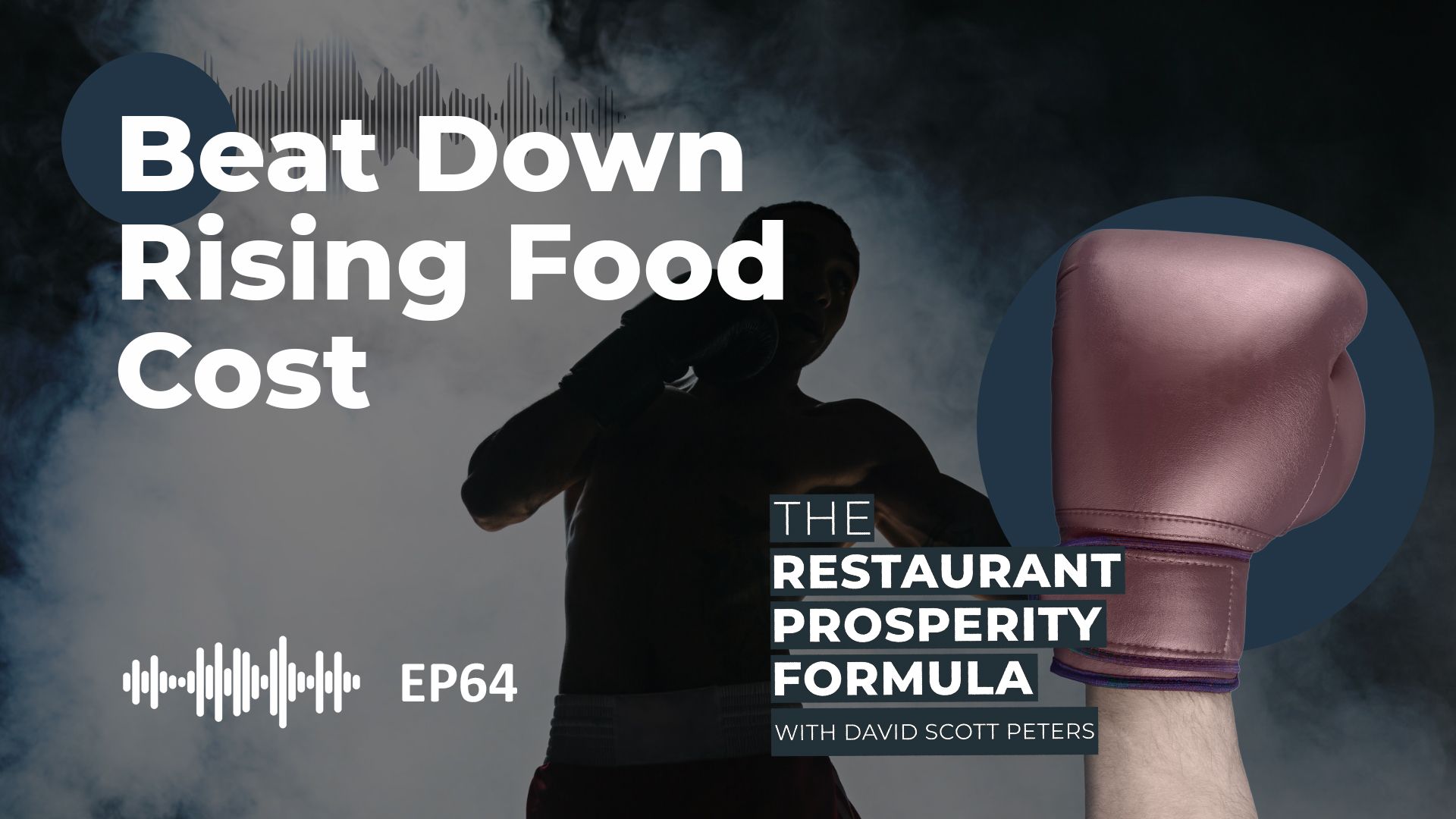How to Beat Down Rising Food Cost in Your Restaurant - Ep 64

I have been coaching independent restaurant owners since 2003 and I can tell you with 100% certainty that what almost every restaurant owner wants to know is how you can control your food cost. It doesn’t matter if you're brand new to the restaurant business or you’re a seasoned veteran. Food cost challenges present themselves all the time.
From regular price increases on a variety of products to natural disasters that drive prices up on commodities like chicken and oranges. Here’s the deal, though. You can count on the prices you’re paying for food to fluctuate and to increase dramatically without much warning.
What if I told you that while food prices going up certainly has a negative impact on your bottom line, the truth is the majority of your issues with high food cost are self-inflicted? I say this with absolute intention of helping you to solve this problem so you can get out of your own way.
Most restaurants operate 7-9 points above their ideal food cost and aside from pricing and natural disasters that affect food cost, these are things you can control:
- Waste and spoilage
- Theft
- The owner taking product out of the restaurant
If you put systems in place to track and control waste, to count and control your product to keep it from being stolen, and account for your own use of your restaurant’s products, you can get your food cost down.
The food cost formula is:
Beginning Inventory + Purchases - Ending Inventory = Use (what left the shelves for the money you brought in). Use divided by food sales gives you your food cost percentage.
Use is product that was:
- Sold
- Wasted/Spoiled
- Stolen
- Taken by the owner
While you may get upset the price of cheese has gone up by 15 cents a pound, how you operate your kitchen has more to do with why your food cost is so high.
Your high food cost is a direct result of two things:
- A lack of systems to control your food cost.
- A lack of leadership.
You see, systems allow you to impose your will without being there. Systems ensure everyone is doing things your way. But systems without management inspecting those systems each and every shift means your systems are not going to be used.
If your food cost is higher than you think it should be, I’m willing to be you are not managing your kitchen correctly. You don’t have the right systems in place to control your food cost and if you have recipe costing cards, you don’t know what to do with them.
What systems am I talking about that would reduce your food cost, prevent theft and ensure you hit your target food cost? (This all assumes you have a budget, which is a must.)
- Key Item Tracker
- Waste Tracker
- Restaurant Checkbook Guardian
- Time/Temp Checklist
Practice mise en place - French term for having all your ingredients measured, cut, peeled, sliced, grated, etc before you start cooking. Pans are prepared. Mixing bowls, tools and equipment set out.
- Prep system
- Pre-portioning
- Portion controls/line checklist
You also need food and beverage control software for:
- Recipe costing cards
- Shelf-to-sheet inventory
- Order guides with par levels
- Ideal vs actual usage reporting
- And finally, menu engineering
And the only way all of these systems get used every day on every shift, there must be a chef, manager, line supervisor or key employee on the line whose job is to make sure these systems are used or they will go away just as fast as you putting them in place.
Listen to this podcast episode to get the nitty gritty on the systems, how it’s all connected and hear about a member of my restaurant coaching group used a budget, systems and improved his leadership to bring his food cost down 7%.
If you think your food cost is too high and you want to do something about it this episode is your plan for success. And it’s your job as the restaurant owner to learn these systems, teach them to your managers and hold them accountable to each of these systems. Then next thing you know, your restaurant’s bottom line will look amazingly different even as food prices rise.
Click the podcast player above to listen in, or you can watch the video on YouTube, click here to download the latest episode.




